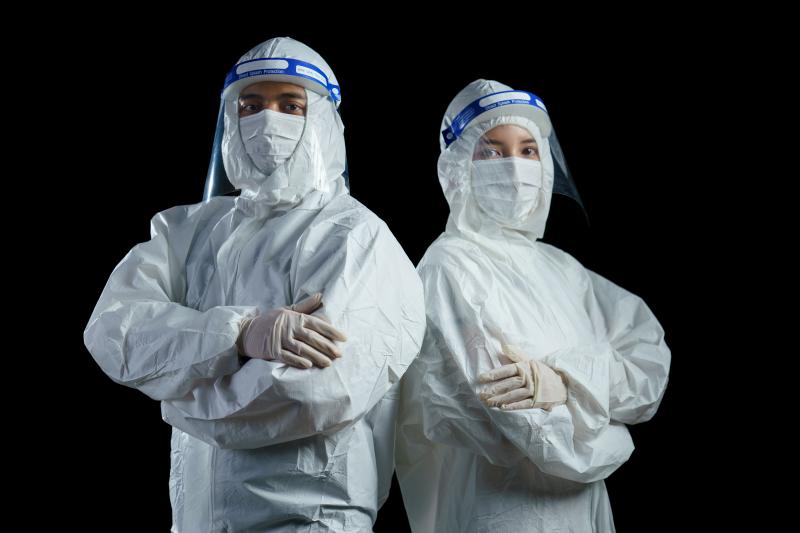The Importance Of Personal Protective Equipment

In various industries, it's a legal requirement to provide employees with personal protective equipment (PPE), such as in agriculture, construction, healthcare, food manufacturing, and engineering. It’s a prerequisite in most industries, although the types of PPE used varies depending on the working conditions.
It’s crucial to make the workplace as safe as possible. Instructions and procedures should be in place while employees must undergo training and supervision. Although safety systems are in place, some hazards may still be present. Personal protective equipment serves as the last level of protection in the workplace. The equipment works as a barrier between an employee and the occupational hazards they face daily.
Personal Protective Equipment In The Healthcare Industry
Personal protective equipment serves as a barrier against infectious or hazardous materials. It works by creating a layer that protects against contact with potential contaminants like bodily fluids, blood, and other secretions from patients. If you're working in an environment where diseases are likely to spread or cause infections among those who come into contact, PPE is crucial in keeping you safe from catching the diseases you’re exposed to.
In healthcare settings where workers are exposed to diseases, wearing personal protective equipment can significantly improve your safety level and prevent disease-causing microorganisms from entering your skin, eyes, nose, or mouth.

Uses Of PPE
Personal protective equipment has a variety of uses in other fields. For example, in kitchens and restaurants, it keeps the food protected against potential contaminants from workers. In medical settings, it’s crucial in activities such as surgeries, check-ups, and dental procedures. Aside from protection against exposure to bodily fluids, PPEs also help keep medical equipment sterile.
As the global pandemic continues to affect nations worldwide, PPE plays an even more essential role in maintaining clean and hygienic environments in commercial establishments and even homes.
Types Of PPE
Personal protective equipment is standard in hospitals to protect staff, visitors, and patients from acquiring diseases. Currently, it’s an essential commodity everywhere in the world. Here are the most common types of personal protective equipment and how they provide protection:
- Masks
Surgical masks cover both the mouth and nose to prevent the entry of microorganisms into the body. Wearing one will lower your risk of catching any diseases or spreading them. There are two- or three-ply cloth masks and respirators that create a secure seal around the nose and mouth. Additionally, there are also masks that have a plastic screen to shield the eyes.
When healthy individuals wear a face mask, it prevents them from inhaling saliva droplets from an infected person. The most efficient masks are the N95 respirators which filter smaller microorganisms. Unfortunately, these masks are often short in supply since the COVID-19 pandemic started. However, N95 masks are best left for healthcare professional use, not just because of the shortage, but also because they may cause breathing problems when not used properly.
- Eye And Face Shields
Using protective eye shields or full-face shields protect not only the eyes but also the face as well. A good example of eye and face protection in the construction industry is a face shield that protects against exposure to gases, dust, chemical splashes, and even radiation. There are different types of eye protection gear that can safeguard workers against workplace hazards. Since viruses can enter the body through the eyes or skin, a face shield can be helpful.
- Safety Gloves
Gloves are the most common type of PPE as it protects the hands from hazards in the workplace. Depending on the job, it may be made of rubber, silicon, or thick cloth. Gloves protect the hands from catching microorganisms, from being exposed to chemicals, or against electrocution.
In the current COVID-19 pandemic, safety gloves are critical PPE since they prevent exposure to the virus, especially those on surfaces. Since you use your hands for almost everything and the virus can thrive without a host for some time, it can readily spread via direct contact.
- Safety Gowns
Safety gowns like hazmat suits, aprons, and laboratory gowns, may include a full cover for the head and shoes. These PPEs are used during surgical procedures, and in cases where family members visit a patient in isolation due to a highly infectious disease. COVID-19 is a perfect example of a highly contagious disease. With this in mind, healthcare professionals should wear protective clothing before coming into contact with anyone, especially inside healthcare facilities.
Conclusion
Today, personal protective equipment is crucial for the safety of everyone, especially those who are working in the healthcare industry. As the coronavirus pandemic continues to sweep throughout the world, the need for personal protective equipment will go on while the virus continues to be a global threat.
More to Read:
Previous Posts:








